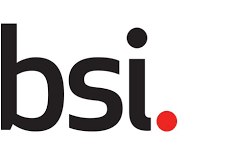Please be advised that a New Work Item Proposal has been loaded to the BSI Standards Development Portal for comment.
Any comments received will be submitted to the national committee MTE/1/2 – “Machine tools – Accuracy” for consideration when deciding the UK response to the associated Standards Development Organisation.
Proposal: ISO/PWI TS 230-13, Test code for machine tools — Part 13: Guidelines on acceptance tests for machine tools used as coordinate measuring machines.
Please visit https://standardsdevelopment.bsigroup.com/projects/9023-08877#/section
Comment period end date: 01/09/2023
Scope
This document provides information and guidelines related to the determination of the measuring performance of machine tools used as Coordinate Measuring Machines (CMMs). It includes consideration of different use cases, guidance on the selection of suitable test methods, information about the application of the test methods, and the environmental and metrological conditions.
This document addresses machine tools with at least two orthogonal linear axes using only contacting probing systems of any type operating in the discrete-point probing mode for measuring movements only with linear axes.
This document does not explicitly address:
parallel kinematic machine tools
machine tools using probing systems used in scanning mode or non-contacting probing systems.
Purpose
Modern machine tools are typically equipped with a probing system, that theoretically extends their functionality to perform complex and automated measurement tasks. Although the market already increasingly offers products that allow to operate the machine tool like a coordinate measuring machine, the use of machine tools for dimensional inspections of components is still rare and risky. The main reason for this is the current lack of metrological traceability of the results. Without specifying a measurement uncertainty, on-machine measurements are unqualified for any geometric inspections. However, by shifting quality inspections to the machine tool, a considerable shortening of quality control loops can be achieved compared to a downstream or separated measurement. This offers the potential for cost-saving, which is particularly high in manufacturing with steep value-added chains, e.g. large component production and individual production. Even for safety-critical components where a 100% inspection is required, measuring on machine tools can be advantageous. The proposed document provides information and guidelines related to the determination of the measuring performance of machine tools used as coordinate measuring machines. It includes consideration of different use cases, guidance on the selection of suitable test methods, information about the application of the test methods, and the environmental and metrological conditions. It will support the reader to find and apply the right method to determine the measuring performance of a machine tool to perform measurement tasks for the given needs. The methods described will enable traceable measurement by providing an appropriate uncertainty budget. If you have any comment or need more information, please contact Sami Ortiz at sami.ortiz@mta.org.uk

